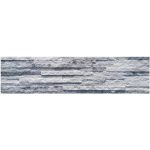Introduction
Cultured stone siding, also known as manufactured stone veneer, is a popular choice for homeowners and builders looking to enhance the appearance and value of their properties. With its ability to mimic the look of natural stone at a fraction of the cost, cultured stone siding offers a versatile and durable option for exterior cladding. In this comprehensive guide, we will explore the various aspects of cultured stone siding, including its composition, benefits, installation process, maintenance requirements, and design options.
Composition of Cultured Stone Siding
Cultured stone siding is made from a mixture of lightweight concrete or cement, aggregates, and iron oxide pigments. These materials are combined to create a moldable mixture that can be shaped and textured to resemble natural stone. The use of iron oxide pigments allows for a wide range of colors and finishes to be achieved, providing homeowners with the flexibility to choose a look that complements their property's aesthetic.
Benefits of Cultured Stone Siding
There are numerous benefits to choosing cultured stone siding for your home's exterior. One of the primary advantages is its cost-effectiveness compared to natural stone. Cultured stone siding is typically more affordable to purchase and install, making it a budget-friendly option for homeowners looking to achieve the look of stone without breaking the bank.
In addition to its affordability, cultured stone siding is also lightweight, which can simplify the installation process and reduce the need for additional structural support. This lightweight nature makes it easier to transport and handle, saving time and labor costs during installation.
Another key benefit of cultured stone siding is its durability. Made from a mixture of concrete and aggregates, cultured stone siding is resistant to rot, mold, and pests, making it a long-lasting and low-maintenance option for homeowners. It is also fire-resistant, providing an added layer of protection for your home.
Installation Process
The installation process for cultured stone siding can vary depending on the specific product and manufacturer. However, the general steps involved in installing cultured stone siding are as follows:
1. Surface Preparation: Before installing cultured stone siding, the existing exterior surface must be cleaned and prepared. This may involve removing any existing siding, repairing damaged areas, and applying a weather-resistant barrier.
2. Installation of Metal Lath: A metal lath is typically attached to the exterior surface using nails or screws. This lath provides a stable base for the cultured stone siding to adhere to.
3. Application of Mortar: A mortar mix is prepared and applied to the metal lath in a thin layer. This mortar acts as the adhesive that will hold the cultured stone pieces in place.
4. Placement of Cultured Stone Pieces: The individual cultured stone pieces are then placed onto the mortar in the desired pattern. Care should be taken to ensure proper alignment and spacing between the stones.
5. Grouting: Once the cultured stone pieces are in place, grout is applied to fill in the gaps between the stones and create a seamless appearance.
6. Sealing: Finally, a sealant is applied to the cultured stone siding to protect it from water damage, stains, and fading.
Maintenance Requirements
Cultured stone siding is relatively low-maintenance compared to natural stone, but it still requires some care to ensure its longevity and appearance. Regular cleaning with a mild detergent and water can help remove dirt, debris, and stains from the surface of the siding. Avoid using harsh chemicals or abrasive cleaners, as these can damage the finish of the cultured stone.
Inspecting the siding periodically for any signs of damage, such as cracks or chips, is also important. Repairing any damage promptly can prevent water infiltration and further deterioration of the siding. If you notice any issues with your cultured stone siding, contact a professional installer to assess the damage and recommend the appropriate repairs.

Design Options
One of the key advantages of cultured stone siding is its versatility in design options. With a wide range of colors, textures, and shapes available, homeowners can customize their exterior cladding to suit their personal style and the architectural style of their home. Whether you prefer a rustic, traditional, modern, or contemporary look, there is a cultured stone siding option to match your design preferences.
Some popular design options for cultured stone siding include:
- Stacked stone: This style features stones stacked on top of each other in a natural, irregular pattern, creating a rugged and textured appearance.
- Cobblestone: Cobblestone siding mimics the look of small, rounded stones, giving a charming and timeless aesthetic to the exterior of a home.
- Ledge stone for vintage aesthetics : Fieldstone siding showcases a mix of shapes and sizes, creating a more organic and rustic look that complements a variety of architectural styles.
- Limestone: Limestone siding offers a smooth and sophisticated finish, ideal for modern and contemporary homes looking for a clean and minimalist aesthetic.
Conclusion
Cultured stone siding is a beautiful, durable, and cost-effective option for homeowners looking to enhance the appearance and value of their properties. With its ability to mimic the look of natural stone while offering greater affordability and versatility, cultured stone siding has become a popular choice for exterior cladding. By understanding the composition, benefits, installation process, maintenance requirements, and design options of cultured stone siding, homeowners can make an informed decision about whether this material is the right choice for their home.
